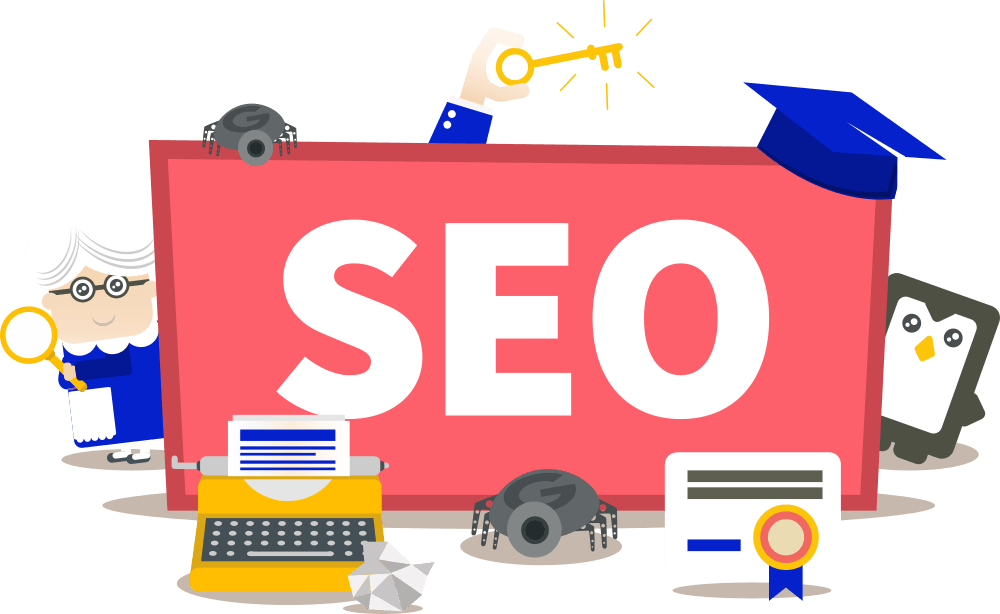Inclusive Design, Inclusive Rankings: Why Accessibility Is the Next SEO Battleground
As businesses race to strengthen their online presence and secure top rankings on search engines, one powerful yet often overlooked strategy has begun to dominate modern optimization practices — accessibility. For organizations looking to expand their audience and boost visibility, investing in best seo services in islamabad can help integrate accessibility-focused design principles that not only improve usability but also enhance search performance. Accessibility is no longer a nice-to-have; it’s becoming the next major SEO battleground, where inclusive design determines who gets seen, who gets clicked, and who earns customer trust.
Accessibility: The Overlooked Cornerstone of SEO
For years, search engine optimization has been defined by keywords, backlinks, and technical audits. But as Google and other search engines evolve, their focus has shifted toward user experience — rewarding websites that deliver quality, clarity, and usability. Accessibility fits perfectly into this evolution.
An accessible website ensures that people of all abilities — including those using assistive technologies such as screen readers or voice navigation — can navigate, understand, and interact with digital content. Search engines, in turn, rely on structured data, semantic HTML, and clear navigation — the very same elements that power accessible design.
In other words, accessibility and SEO share the same DNA. What helps users with disabilities also helps search engines better crawl, interpret, and rank your site.
The Algorithm’s Invisible Preference for Accessibility
While Google doesn’t list “accessibility” as a direct ranking factor, its algorithm heavily favors accessibility-friendly elements. These include:
-
Proper heading structure (H1–H6): Organizes content hierarchically, making it easier for both users and crawlers to interpret page relevance.
-
Alt text for images: Describes visuals for visually impaired users — and provides additional context for image search indexing.
-
Keyboard navigability: Ensures that all users, including those who cannot use a mouse, can access content smoothly.
-
Descriptive link text: Replaces generic “click here” with meaningful anchor phrases that improve context.
-
Readable contrast ratios: Enhances text visibility, lowering bounce rates.
These seemingly small adjustments collectively improve a website’s usability metrics — engagement rate, time on page, and return visits — all of which are key behavioral signals Google uses to determine ranking quality.
Core Web Vitals and Accessibility: The Technical Intersection
Google’s Core Web Vitals — Largest Contentful Paint (LCP), Cumulative Layout Shift (CLS), and First Input Delay (FID) — measure how quickly and smoothly users experience your site. Accessibility directly contributes to these metrics.
For example:
-
A site with accessible visual hierarchy and responsive design will load elements predictably, reducing layout shifts.
-
Clearly labeled buttons and optimized images improve input responsiveness and reduce user frustration.
-
Lightweight, structured code improves load performance — benefiting both users and search bots.
In essence, accessibility supports technical SEO by ensuring that your site’s code, structure, and content align with Google’s performance and usability standards.
The Human Side of Search: Empathy in Design
At its core, accessibility is about empathy — designing for everyone. The internet is used by people with varying levels of vision, hearing, mobility, and cognition. By building inclusive interfaces, businesses demonstrate respect for diverse audiences while simultaneously optimizing for search visibility.
This human-centered approach has measurable business benefits. When users find a site easy to navigate and understand, they stay longer, engage more deeply, and convert at higher rates. These positive behavioral signals — lower bounce rates, longer session durations, and higher engagement — directly influence SEO performance.
An inclusive design philosophy doesn’t just improve accessibility; it amplifies discoverability.
Semantic HTML: Speaking Google’s Language
Semantic HTML is the bridge between human and machine understanding — a foundation for both accessibility and SEO. Proper use of tags like <header>, <article>, <nav>, and <footer> helps assistive technologies identify content sections. The same structure guides search engines to prioritize key information and understand context.
For example:
-
<h1>defines the main topic of the page, which aligns with the primary keyword focus. -
<alt>attributes describe non-text elements, adding relevance for image searches. -
<aria-labels>provide context to screen readers and assist search crawlers in understanding functionality.
This dual-purpose markup ensures that accessibility improvements also drive ranking improvements — reinforcing the synergy between inclusivity and SEO.
Voice Search and Accessibility: The Next Evolution
Voice search optimization has exploded in recent years, driven by the rise of smart assistants like Alexa, Siri, and Google Assistant. Interestingly, accessibility-driven sites are already well positioned for voice-based search because they use structured data and natural language content.
Users relying on voice navigation — including people with visual impairments — expect concise, conversational responses. Google’s algorithms prioritize accessible, semantically rich content when pulling voice snippets.
By designing with accessibility in mind, businesses also future-proof their SEO for the voice-first era — where speaking replaces typing and intent replaces keywords.
Accessibility Tools: The SEO Power-Ups
To create accessible and SEO-friendly websites, developers and designers can rely on a range of tools that help audit and enhance performance. Some of the most valuable include:
-
Lighthouse: Google’s built-in tool for assessing accessibility, performance, and SEO simultaneously.
-
WAVE (Web Accessibility Evaluation Tool): Analyzes color contrast, headings, ARIA labels, and more.
-
AXE DevTools: A browser extension for identifying accessibility errors in real-time during development.
-
Screen Readers (NVDA, JAWS): Testing with these ensures real-world usability for users with disabilities.
By incorporating these tools into regular workflows, teams can ensure their sites not only meet accessibility standards but also gain a competitive SEO edge.
The Legal and Ethical Edge
Accessibility is not only a ranking advantage — it’s also a compliance requirement in many regions. Regulations like the Americans with Disabilities Act (ADA) and WCAG 2.1 guidelines emphasize the need for accessible digital experiences.
Failure to comply can result in legal issues and reputational damage. From an SEO standpoint, compliance ensures a clean, structured, and user-friendly codebase — the same attributes that boost visibility.
Thus, accessibility becomes both a moral and strategic imperative. Brands that design inclusively earn trust, loyalty, and search engine favor simultaneously.
Case in Point: Accessibility-Driven Success
Consider an e-commerce platform that restructured its product listings using proper heading levels, descriptive image alt text, and ARIA roles. The outcome? A 25% reduction in bounce rate and a 17% increase in organic traffic within months.
Another case involved a news site implementing keyboard navigation and high-contrast modes — resulting in longer session durations and improved engagement from all users, not just those with disabilities.
These examples illustrate that accessibility isn’t a niche feature — it’s a growth multiplier that benefits everyone.
Designing for Everyone: The SEO Advantage
Accessibility-driven design encourages clean code, thoughtful content structure, and intuitive navigation — the same elements that create better SEO outcomes.
Key takeaways for designers and marketers include:
-
Start accessibility early: Incorporate it during wireframing and development, not as an afterthought.
-
Use semantic HTML and ARIA labels: These improve both screen reader usability and search engine comprehension.
-
Prioritize readability: High contrast, simple fonts, and clear headings improve user engagement and retention.
-
Test constantly: Regular audits ensure you maintain accessibility as technologies evolve.
-
Think inclusively: Design for real-world users, not just idealized personas.
When you create for everyone, you rank higher for everyone.
Conclusion: Accessibility Is the Future of SEO
The line between accessibility and SEO is disappearing fast. Google’s algorithms increasingly reward websites that prioritize real human experience over technical shortcuts. Inclusive design — rooted in empathy, structure, and usability — ensures your website speaks fluently to both users and search engines.
For businesses aiming to future-proof their digital presence, accessibility is not a compliance checkbox — it’s a competitive advantage. It reflects your brand’s integrity, improves performance metrics, and amplifies visibility.
By embracing inclusive design today, you don’t just make your website accessible — you make it discoverable, sustainable, and ready for the evolving search landscape of tomorrow.



